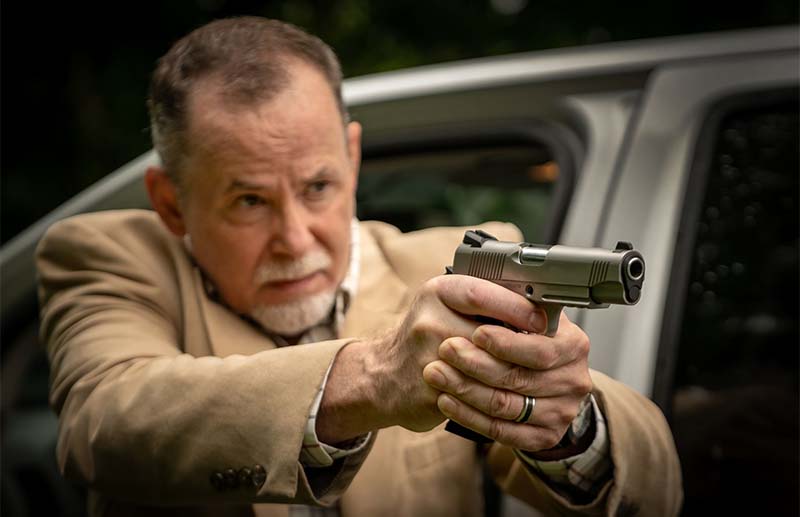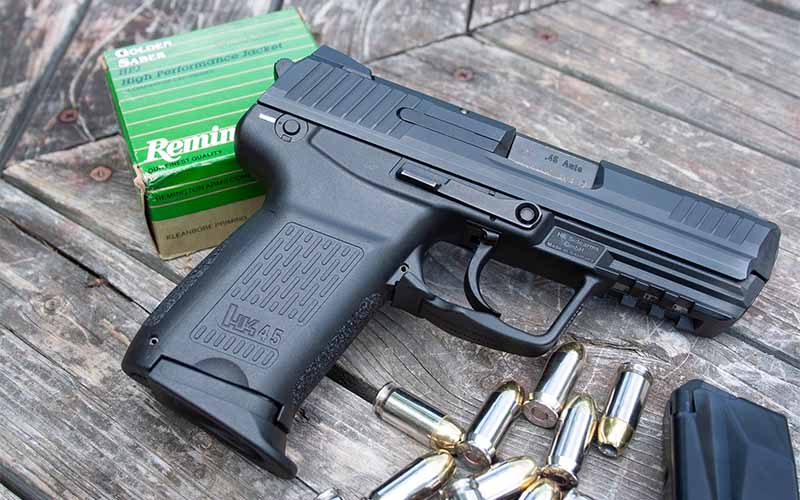
Simplifying some of the more complicated aspects of carrying a concealed handgun.
The carrying of concealed handguns is becoming more prevalent. Even with a push for more stringent gun control by politicians, we’re seeing more and more support for concealed handgun carry by citizens and state governments. Currently, 21 of 50 states have Constitutional Carry, meaning that the concealed carry of a firearm is allowed without a permit. This also means there are now a lot of folks who can conceal carry legally who may have no training at all.
I do not believe in government-mandated firearms training. I do believe anyone intent on carrying a firearm for personal protection should attempt to—on their own accord—obtain as much training as possible. The problem is that basic and more complex instruction on concealed carry and self-defense aren’t provided free of charge. This means those who’ve realized they’re their own first responder must pay for training, buy videos or turn to periodicals like Gun Digest for their education.
Of course, a full education on concealed carry can’t be presented in one training class, video, article or even in one or several books, of which there are many (I even wrote one of them). What can be provided in an article such as this is a critical look and maybe a simplified overview of some of the most important aspects of carrying a concealed handgun for personal protection.

Safety Concerns Simplified
Firearms aren’t dangerous. They don’t mysteriously go “bang” and injure or kill. Humans are dangerous. They’ve committed atrocious acts throughout history and frequently do foolish things with firearms. An internet search will reveal anywhere from four to a dozen firearm safety rules. Jeff Cooper gave us the four most popular firearms safety rules. But, with all due respect, firearms safety isn’t that complicated.
In fact, it could be simplified with one rule: Never allow a firearm to point at anything you don’t want to put a bullet through or destroy. Learn all the rules and strictly follow them, but if you adhere to this one rule, your firearms accidents will only be loud noises.
Handgun Choice
The topic of handgun choice is one of the most argued and debated topics regarding self-defense, mostly because modern humans are driven by gear as opposed to skill or application. As with gun safety, handgun choice can be simplified: You should choose the most reliable and most powerful handgun you can comfortably carry concealed, and that you can shoot with speed and accuracy.

Notice I didn’t name a particular handgun or cartridge. This is because the most important aspect of a handgun that’ll be carried for personal protection isn’t its type, cost, caliber or potential interaction with a threat. The most important aspect is its interface with the user. A Smith & Wesson 44 Magnum would be ideal for shooting someone who is intent on killing you. However, most humans cannot easily conceal a revolver that large or deal with recoil that intense.
When it comes to the selection of a handgun, there’s an unlimited collection of variables to consider. What kind of handgun will your body type and usual dress allow you to conceal? What type of handgun does your strength allow you to manipulate? How much recoil can you tolerate? What type of handgun can you grip comfortably? How good are your eyes; do you need big bold sights or a reflex sight? The list could go on an on. Find what’s right for you; there’s no best answer for everyone.
Carry Method(s)
There are a variety of ways a handgun can be carried concealed. Though strong side, inside the waistband (IWB) carry is the most popular, it’s not best for everyone. Neither is ankle carry, pocket carry or the use of a shoulder holster. You see, not only do humans come in all different sizes, but they also circulate in all sorts of social settings. To further complicate choices, few humans exist in only a single environment. You may wear a suit and tie at work but spend your nonworking hours in shorts and a T-shirt.

Varied public interactions and lifestyles demand different carry methods. They can also mandate different firearms. If you’re a runner, you won’t be able to comfortably conceal a Glock 17 during your course through the park. When you’re vacationing in 100-plus-degree temperatures, your shoulder holster for that 5-inch 1911 won’t work. For me, I’ve found I can conceal a Browning Hi Power or Wilson Combat EDC X9 in and IWB holster almost year-round here in West Virginia. However, there’s times when I need a much smaller gun carried elsewhere. There’s no best all the time answer for everyone.

Accessories
I’ve read some gun writers who insist you carry a handgun with two extra reloads, pepper spray, an impact weapon, a fighting knife and even restraint devices everywhere you go. I get it, you need to be prepared. However, some logic and common sense needs to apply as well. You don’t have a fire extinguisher in every room, and you only carry one spare in your car as opposed to four. If you want to carry all that stuff every day, go for it. While you’re at it, maybe you can find a used Sherman tank to drive around as well.
I’ve been in locations where I felt a fully loaded Batman belt wouldn’t have supported enough gear to keep me safe. I’ve found that the best way to avoid that feeling is to avoid bad locations. If your lifestyle demands you frequent bad locations, equip yourself accordingly or maybe reconsider your life choices. Take it from someone who wore a police duty belt for many years; most humans can’t comfortably and normally live their lives carrying around that much stuff. The tools you carry for protection must dovetail into your lifestyle. Be reasonable in your choices, and practice with what you carry, from where you’ll carry it.
Skill Level
For those who conceal carry, skill level varies considerably. Not just with shooting, but with firearms manipulation as well. What most want to know is how proficient they need to be to successfully defend themselves from a murderous attack. The only acceptable answer to that question is that you can’t be good enough. This is because you have no idea what the specifics of a potential life-threatening situation will be. From a training standpoint your only logical approach is to attempt to always improve at every aspect of concealed carry, personal protection and self-defense.

I recently read on social media where a firearms trainer/gun writer suggested practicing reloading drills was a waste of time because most self-defense shootings are sorted out well before a magazine or cylinder of ammunition has been expended. Well, that’s a ridiculous way to determine your training. Though it varies greatly depending on several factors, by that same logic, you don’t need to carry because the chance of becoming a victim of a violent crime is so small.
You need to be able to draw your handgun from concealment fast and efficiently. You need to be able to place shots with speed and accuracy out to about 15 yards. You need to be able to manipulate your handgun so you can effectively reload, clear stoppages and keep it in the fight. You need to learn to exploit cover and concealment while doing all those things. And you need to continually work on being able to do all these things better.

Justification
Finally, we get to the most critical aspect of the use of force in a self-defense situation: justification. What will justify your use of a firearm to stop an attack? The truth is that neither I, you nor anyone else knows the answer. Justification is something for a jury of your peers to determine; it’s not determined by a checklist guaranteeing your freedom from incarceration or civil liability.
Oddly, for a question so complex, the answer is quite simple. And while it doesn’t guarantee anything, it provides you some logical guidance. Your freedom will depend on the perception of the jury based on the evidence presented. By the same token, your actions must depend on your perception of the situation as it unfolds. You won’t have time to consider what the jury will perceive; you must, in a moment, determine that shooting is the only way you can reasonably escape death or grave bodily harm. Even if that’s your perception—and an undeniable fact—you may still be found guilty of manslaughter or homicide. However, short of that perception on your part, lethal force can’t be justified.
Editor's Note: This article originally appeared in the 2021 Buyer's Guide special issue of Gun Digest the Magazine.
For more information on concealed carry holsters check out:
- Essential Gear: Best Concealed Carry Holsters
- Buckling Up The Basics Of Gun Belts
- Pocket Holster Options For Easy Everyday Carry
- The Shoulder Holster And Its Carry Angle
- Pros And Cons Of The Appendix Carry Holster

Next Step: Get your FREE Printable Target Pack
Enhance your shooting precision with our 62 MOA Targets, perfect for rifles and handguns. Crafted in collaboration with Storm Tactical for accuracy and versatility.
Subscribe to the Gun Digest email newsletter and get your downloadable target pack sent straight to your inbox. Stay updated with the latest firearms info in the industry.

![Best Concealed Carry Guns In 2025 [Field Tested] Wilson Combat EDC X9S 1](https://gundigest.com/wp-content/uploads/Wilson-Combat-EDC-X9S-1-324x160.jpg)


![Best 9mm Carbine: Affordable PCCs [Tested] Ruger Carbine Shooting](https://gundigest.com/wp-content/uploads/Ruger-Carbine-Shooting-100x70.jpg)
![Best AR-15: Top Options Available Today [Field Tested] Harrington and Richardson PSA XM177E2 feature](https://gundigest.com/wp-content/uploads/Harrington-and-Richardson-PSA-XM177E2-feature-100x70.jpg)

I have found that Shooting IDPA and Multi-gun every month for the last 10yr has helped keep me operating at a fairly high level with shooting AND especially in correcting Malfunctions (Quickly) like the dreaded Double Feed, etc. So not just Shooting but Operating Tactically, Moving, etc – Use of Cover, Shot Sequencing, Priorities, Careful for /of ID – Non-threats etc. Moving Threats w/Non-Threats, More. And some, on the ground, awareness of how my guns are Running/Operating – at Speed. And in All Weather conditions.
Good article. Get a gun that feels good in you hand. I always say get the biggest caliber you can comfortably shoot. I live in south Louisiana and it gets hot, damn hot down here but I have found a light t-shirt with a short sleeve button-down fishing shirt does a good job for concealing a number of different carry styles. Only big issue is I keep the fishing shirt unbuttoned so you have to be aware that on windy days you need to keep the shirt from ‘flying’ up and exposing your carry. I am somewhat confused by the authors last statement, “lethal force can’t be justified”. Not sure of the context he is coming from. I’ve been trained that lethal force can be justifiable force in certain situations.
Yes, a well written and informative article. In many discussions on this similar topic, I constantly mention “Take Hollywood out of the picture and insert reality”.
A well written article and I agree with the author. One can spend too much time and money on ED Carry “goodies,” that is time and money better spent on learning to draw fast, engage targets, and clearing a foul (FTF, FTE,or whatever), which if you carry a Semi Auto, ond should always carry one spare mag as malfunction drills almost always require dropping the magazine to clear the foul.
I sometimes go to a shoulder holster in the cold months, but the rest of the time carry OWB (just enough extra flab around the middle that makes IWB uncomfortable and at 63, who am I kidding about losing that). Occassionally, I carry a J frame in an ankle rig, withe clothing that OWB prints too much. That means though, I have to spend time practicing with each carry option to maintain proficiency.